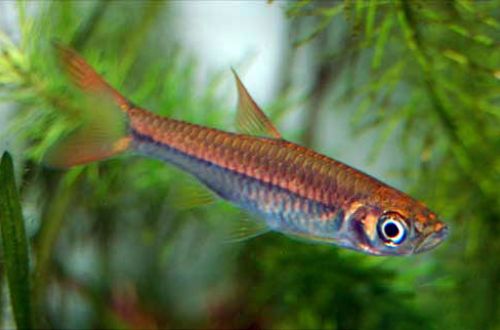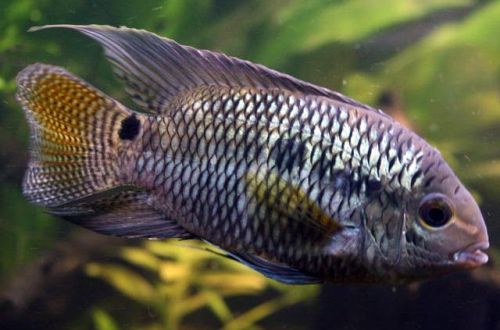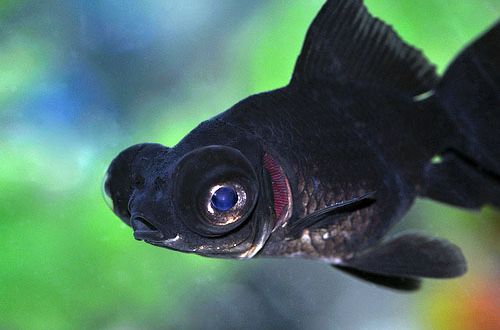
Rasbora Tornieri
Rasbora Tornieri, scientific name Rasbora tornieri, belongs to the Cyprinidae family. The fish is named after the German zoologist and paleontologist Gustav Thornier, who described many fish in Southeast Asia. Undemanding and easy to keep, it will make a good addition to the freshwater aquarium community. May be recommended to the beginner aquarist.

Contents
Habitat
It comes from Southeast Asia, where it is found on the territory of Thailand, Cambodia, Vietnam, as well as the islands of Malaysia, in particular Sumatra and Borneo. The wide range of habitat covers many bodies of water with different conditions: swamps with acidic water and an abundance of organic matter, clear fast rivers, temporary backwaters and flooded regions of the rainforest during the rainy season.
Brief information:
- The volume of the aquarium – from 100 liters.
- Temperature – 20-26°C
- Value pH — 4.0–7.0
- Water hardness – soft (1-10 dGH)
- Substrate type – any
- Lighting – any
- Brackish water – no
- Water movement – any
- The size of the fish is 8–9 cm.
- Food – any food
- Temperament – peaceful
- Content in a group of 6 individuals
Description
Adult individuals reach a length of about 8–9 cm. Sexual dimorphism is weakly expressed. In the adult state, the females are somewhat larger than the males, especially in the spawning state. The fish has no expressive features: the back is gray, the belly is silvery, a double horizontal strip of dark and golden hue runs along the body. In some cases, the color becomes pinkish.
Food
Not picky about the diet. Will accept most popular foods. In the daily diet, it is recommended to combine dry and fresh foods, such as flakes and granules with live or frozen artemia, bloodworms, etc. Protein-rich food is a must during the breeding season.
Maintenance and care, arrangement of the aquarium
The optimal dimensions of the aquarium for a small flock of Tornieri Rasbor start from 100 liters. The design is arbitrary and is selected at the discretion of the aquarist. The fish is able to live both in an almost empty tank and with an abundance of aquatic plants. It is mandatory to have a lid to avoid accidental jumping out.
The content of this species will not cause problems even for a novice aquarist. Standard aquarium maintenance procedures (ground cleaning, water changes, etc.) together with the installation of a productive filtration system, are able to maintain acceptable water conditions.
Behavior and Compatibility
A peaceful schooling fish, perfectly compatible with other non-aggressive species of comparable size. As neighbors, you can use fish from different regions, however, representatives from the same habitat (Southeast Asia) will look the most harmonious.
Breeding / breeding
At the onset of the breeding season, the fish spawn directly on the substrate. The incubation period lasts 1-2 days depending on the temperature. The fry that have appeared begin to swim freely on the second day. There is no parental care, so adult fish can eat their own eggs and juveniles. If there are no dense thickets of plants and other shelters in the general aquarium, then the survival rate of fry will be minimal.
You can raise offspring by timely moving the eggs to a separate tank with identical water conditions, where they will be completely safe. Feed with specialized microfood or Artemia nauplii.
Fish diseases
In a balanced aquarium biosystem with suitable water conditions and regular maintenance, fish health problems usually do not occur. Illnesses can be the result of improper care or injury. Read more about symptoms and treatments in the Aquarium Fish Diseases section.





